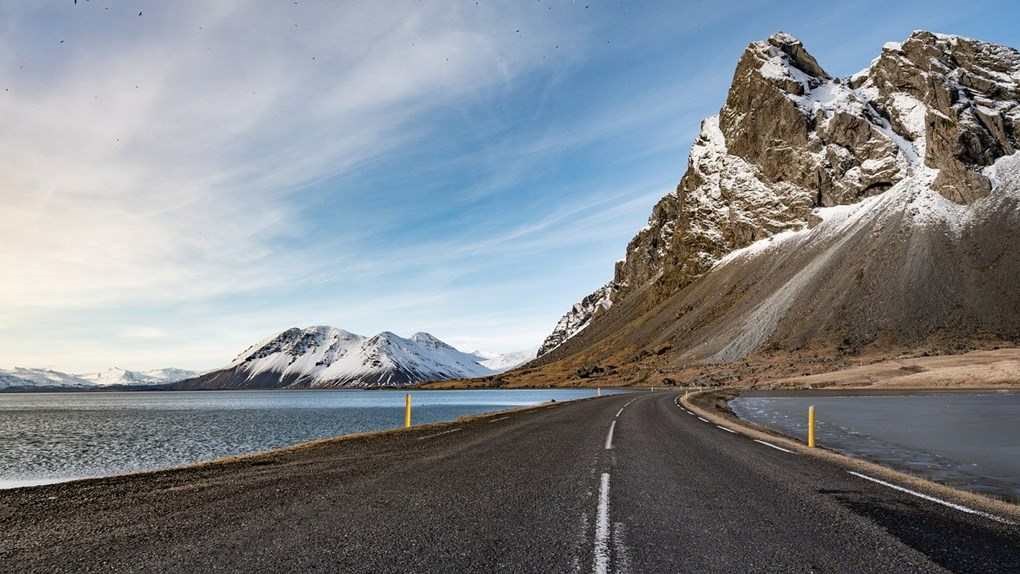
Table of Contents
Driving around Iceland is the easiest way to see as much of this beautiful country as possible, and that’s exactly why so many travellers choose to take to the Icelandic roadways when visiting.
However, no matter how sure of your driving skills you may be at home, it’s still important, while visiting a foreign country, to brush up on the laws of the road and the driving specificities of that country. If you plan on driving in Iceland during an upcoming trip, take a look at our full guide to driving in Iceland below — so you can be safe on the road and have as much fun during your Iceland adventure as possible!
Is driving necessary in Iceland?
While you don’t necessarily need to drive yourself around while visiting Iceland, self-driving is the best way to get the most out of an Iceland trip. Sure, you can find group tours that provide transportation and you could even possibly just stay around Reykjavik and use public transportation. But, if you want to see as much as possible of Iceland, at your own pace, more economically, self-driving is the way to go.
Self-driving allows you to completely tailor your holiday to exactly your travel preferences and style. Want to see all of Iceland’s volcanoes? Plan a volcano road trip. Want to travel Iceland’s Ring Road? Do it at your own pace, whether it takes you one week or three. Simply want to go where you want, when you want, no tour guide required? Renting a car in Iceland makes it possible.
But, if you want to learn more about all of your transportation options while in Iceland check out our full Iceland transportation guide.

Why drive a car in Iceland?
As we said, driving a car in Iceland is the easiest way to see the country in full. You can see the beautiful landscapes on your own time, without waiting for public transportation (which might not even take you to all the spots you want to visit — some destinations around Iceland are only accessible via private car) or a tour guide. You’re free to come and go as you wish, and discover all of the sights in Iceland that you most want to see, when and how you want to see them.
Things to know before driving in Iceland
There are a few things you’ll want to do and consider before driving in Iceland.
1. Rent a car: Choose the right rental car.
Based on where you’re going and what you plan to do, make sure to choose the right rental car for your Iceland driving trip. You’ll need a 4x4 vehicle if you’re visiting during the winter months or plan on visiting the Highlands (which are only open during the summer). If you want to camp while in Iceland, you’ll need to rent a campervan. Otherwise, if you don’t plan on doing any winter travel or mountain travel, you can save a little money by renting a budget vehicle.
For more information on what car might be right for you, check out our guide to renting a car in Iceland.
2. Budget wisely.
Before booking a rental car, consider what your budget will allow. Don't just look at the main rental fee and assume that’s the only fee you’ll incur. Beyond the rental fee, you’ll also need to purchase insurance and gas. If you want to save some money while driving in Iceland, you might want to consider renting a diesel car like the Dacia Duster, since diesel is cheaper than petrol.
3. Choose the right insurance.
While driving in Iceland, choosing the right insurance for your rental car is essential. Doing so will ensure that, in case of an accident or damage, you’re covered and can avoid any costly extraneous fees. If you book a rental car directly through the Lava Car Rental website, you’ll find that a lot of the necessary insurance is already included in the cost of your rental, including third-party liability insurance, collision damage waiver insurance, super collision damage waiver insurance, gravel protection and theft protection. If you decide to upgrade your insurance to a full protection package, you’ll also receive sand and ash protection, tire protection and access to self-service for pick-up and drop-off, 24/7.
4. Book in advance.
Definitely make sure to book your rental car well in advance of your travel. Iceland rental cars are often quite in demand, especially in the summer months, so waiting longer to book can mean higher rates and fewer options.
5. Know what you need to drive in Iceland
If you’re coming from another country to drive in Iceland, you’ll need a valid driver’s licence from your home country. The only licence requirements are that your licence is written in the Latin alphabet (or that you have an English translation of your licence) and that your additional drivers in the car likewise have licences to show.
You’ll also need a valid credit card in order to rent a car in Iceland. If you rented your car through a travel agency, you’ll need to show the travel agency’s voucher.
Lastly, Iceland only allows drivers over a certain age to rent vehicles; in general, only drivers aged 20 and older, who have held a driver's license for a year or more, are permitted to rent vehicles. However, special conditions apply for some vehicle models, and you may be required to be at least 23 years of age or older, for your car rental in Iceland. For this reason, always check with your individual car rental company to see what age restrictions might apply to your particular rental.
If you rent a car with Lava Car Rental, our requirements are that you’re at least 20 years old, and that you have a valid driver’s license. Additionally, Lava Car Rental is one of the few car rental companies in Iceland that allows you to rent a car with a debit card, instead of exclusively requiring a credit card. You can learn more about our debit card terms and conditions before you book.
6. Understand Iceland's driving laws.
Driving in Iceland can be very different from driving in your home country. Familiarise yourself with Iceland’s road regulations, road signs, speed limits and licence requirements. Be prepared for the different types of roadways in Iceland, too, including the varying rules that apply to them: for example, you’re only legally allowed to drive a 4x4 vehicle on F-roads.
How to Drive in Iceland?
Driving in Iceland is as easy as driving anywhere else in Europe, if you’re staying on the main, paved roads, in populated areas, such as on the Ring Road. These roads are well maintained and, even in popular areas, traffic is easy to navigate and there’s plenty of signage to point you on your way. Once you’ve brushed up on Iceland’s driving rules and know how to approach Iceland’s ever-changing weather, you’ll be able to go about driving in Iceland, or at least a large part of Iceland, with ease.
If you do decide to venture off the main, paved, more populated roads in Iceland — for example, to explore the F-roads and Icelandic Highlands — you will need to take some further precautions. Our guide to the F-roads in Iceland will give you everything you need to know.
Otherwise, here are some of the things to consider when driving in Iceland, no matter where you go, to make planning and then enjoying your Iceland road trip all the easier.
Road conditions
The road conditions will differ depending on where you are in the country. There are three types of roadways you’ll encounter in Iceland.
- Paved roads: Paved roads are likely what you’re most accustomed to driving on. All of Iceland’s main highways are paved and well-maintained. These include highways around more populated areas in the south of Iceland, as well as major roadways like the Ring Road.
- Gravel Roads: You may encounter gravel roads in more rural areas. These require a little bit of care to ensure safe driving. Go a little bit slower than you might on a paved road.
- F-roads: Iceland’s F-roads are only located in the Highlands are a very special type of roadway. Usually unpaved, gravel and rather rough, they require a 4x4 vehicle, for your safety as well as by Icelandic law, and sometimes include river crossings.
Seasonal considerations
You may also find that your experience driving in Iceland changes due to the season.
Summer (June–August)
In the summer, for the most part, the roads are clear. The warmer temperatures keep the snow away. However, the weather can still change rapidly, and you might run into some rain or wind.
Summer is the only time of year when you can access the F-roads, as they’re closed to all vehicle traffic in the winter months, due to the rough conditions. That said, even in the summer months, when these roads are open, you should only attempt to drive on them if you have that legally required 4x4 vehicle, and if you’re a confident and skilled driver.
Additionally, even if you have a car rental in Iceland that’s a 4x4 vehicle, check with your rental car company to ensure that you can take the car on F-roads, if you plan to do so. Let them know exactly where you’re planning to go in the Highlands, as rental car companies may ask you to stay clear of some specific F-roads, due to their conditions, such as F249 in Þórsmörk. Likewise, car rental companies ask you to stay clear of river crossings.
Once you’ve determined your route through the Highlands is safe and permitted by your rental car company, go about your adventures safely and be sure to fill up your gas tank before you drive into the region, as fuel stations are only located outside of the Highlands.
Lastly, wherever you go about driving in Iceland in the summer, if you plan on using your campervan rental in Iceland to camp out, make sure to only camp at designated campsites rather than just on the side of the road.
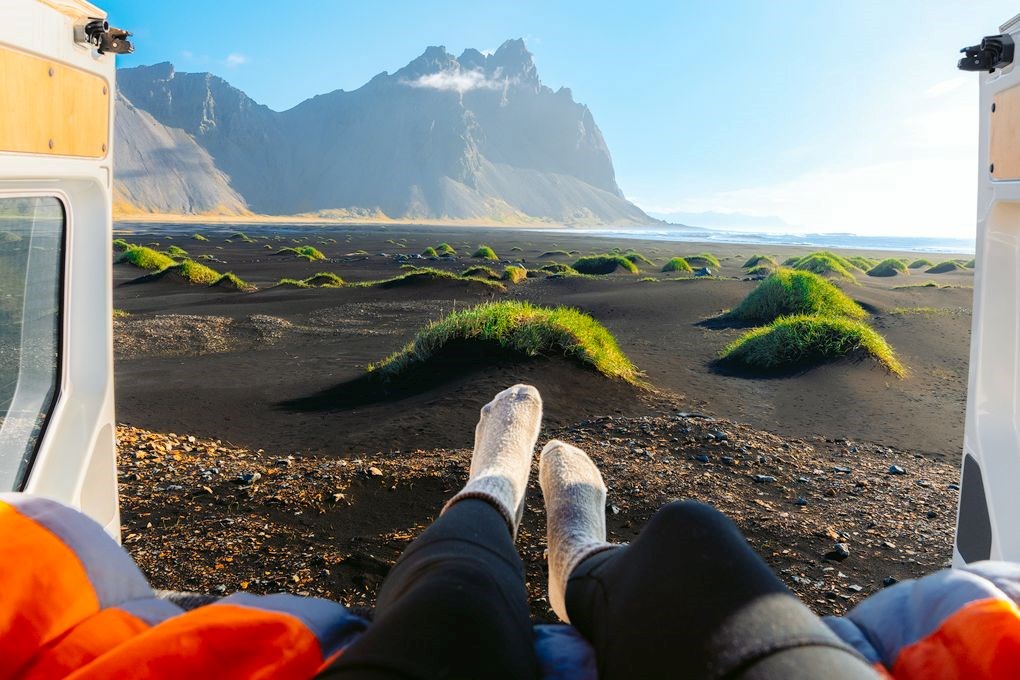
Winter (November–March)
So how do the road conditions in the winter months affect your driving in Iceland experience?
Regardless of where you plan on driving in Iceland in the winter, you can safely expect to encounter snow and ice along the way, so be sure to rent a 4x4 vehicle. Additionally, your 4x4 vehicle should be outfitted with studded tyres, to provide extra traction. All vehicles from Lava Car Rental are outfitted with studded tyres from November to March.
When driving in Iceland in the winter, a few extra precautions are necessary. In addition to simply driving carefully and more slowly than you might normally, keeping an eye out for black ice and similar obstacles on the roadway, you should check road conditions regularly. When you stop, use the provided ice scraper in your rental to remove all the snow and ice from your windshield, windows, mirrors, lights and the top of the vehicle. Keep the windshield wipers clean as well, to keep them functioning throughout your trip.
As you plan your winter road trip through Iceland, also keep in mind that some roads are closed during the winter, such as the F-roads. Other roads may be closed depending on conditions. You can use resources like www.road.is and www.vedur.is to check the current conditions.
However, while driving in Iceland in the winter requires a little more care and thought, it can be wonderfully rewarding. An Iceland trip in the winter typically includes seeing the northern lights, and, if you book a car rental in Iceland, you’ll be able to chase the northern lights, using the Hello Aurora mobile app to find the best spots for clear skies and high solar activity.
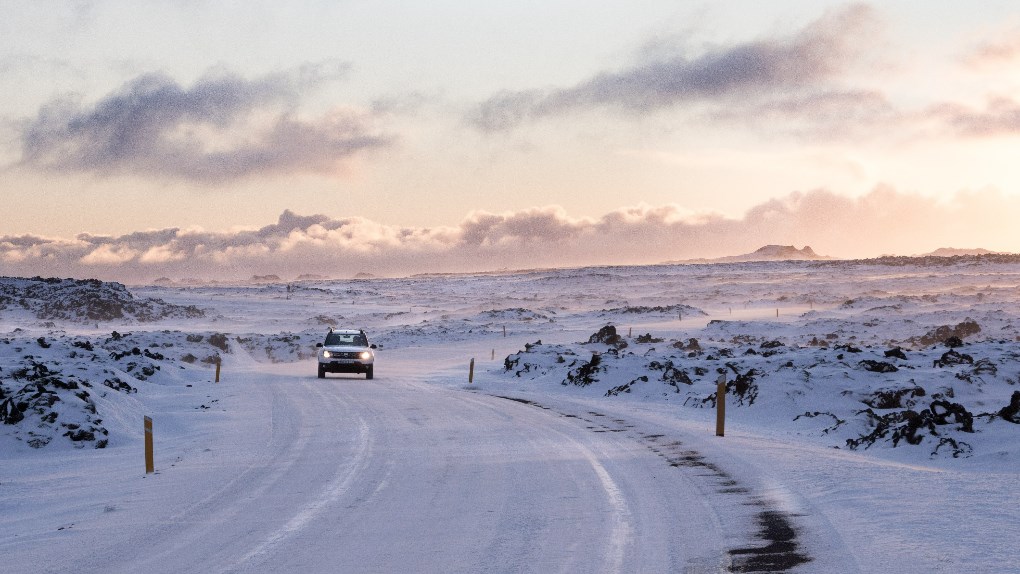
Weather conditions
Lastly, don’t assume that Iceland’s weather only impacts driving in Iceland in winter. Iceland’s weather is unpredictable year-round. Again, check the weather forecasts and road conditions before you drive anywhere in Iceland, using www.road.is and www.vedur.is.
Speed Limits and Traffic Rules
- In Iceland, we drive on the right side of the road and overtake slower traffic from the left side of the road.
- Headlights on all the time: In Iceland, all cars need to have their headlights on day and night, all year long.
- In some cases, particularly on bridges in the more rural areas of Iceland, you’ll find that the two-lane highway narrows, leaving only enough room for one car at a time. In these instances, the vehicle closest to the bridge has the right of way.
- In roundabouts with two lanes, the traffic on the inner lane has the right of way over traffic on the outer lane which can be a big change for some international travellers.
- Speed Limits are 30-50 km/hour (31 mph) in populated areas, 80 km/hour (50 mph) on gravel roads in rural areas, and 90 km/hour (56 mph) on paved roads. While you may think you’re safe to speed if you don't see law enforcement on the roads, think again; Iceland uses speed cameras along roadways to track passing vehicles' speeds and issue fines where needed.
- All off-roading is illegal in Iceland; however, don’t confuse off-roading with using some of Iceland’s F-roads, which you’ll find in the Highlands. These roads are dirt and typically pretty simple, but they are marked, so you can distinguish using an F-road from off-roading. To be safe, if you don’t see any signs in a particular area, just don't drive there.
- Seatbelts: Mandatory for all passengers. Younger children and infants must be seated in child safety seats and children under 12 years of age are not permitted to ride in a car’s front seat.
- There is a zero-tolerance policy for all mobile phone usage while driving, as well as driving while impaired by either alcohol or drugs.
Road signs
Iceland’s road signs may differ from the road signs you’re familiar with in your home country. These are some of the signs you might see as you drive around Iceland.


Safety Tips
Wherever you’re driving in Iceland, whatever the season you’re driving in Iceland, these safety tips can ensure you get around with ease and in comfort.
- Watch for sheep and other wildlife
During certain times of the year, you’ll likely come across some wildlife attempting to cross the roadway. This can range from sheep to Icelandic horses to reindeer. However, the sheep are the most common, and the most likely to wander off into the road. Keep an eye out for them and, if you do see one trying to cross the road in front of you, slow down and then stop until the sheep has safely made it across.
- Only stop the car in safe places
There are designated areas around Iceland where you can safely stop your vehicle, get out and enjoy the scenery. Refrain from stopping the car just anywhere, like in the middle of the road or on the side of the road. Doing so can lead to traffic incidents.
- Be aware of strong winds and doors
If you simply throw open your car door when getting in and out of the vehicle, you may be surprised by a strong wind gust that comes along and tries to pull the door from your hand! When opening and closing car doors, keep a tight grip on the handle and always close doors promptly, rather than leaving them open while you take a photo, get something out of the back of the car, etc.
- Know who to call during a breakdown or emergency
No matter where you’re travelling, it’s smart to know who to call in the event of an emergency.
If you have a true emergency, and need an ambulance or police, call Iceland’s national emergency phone number: 112. There’s also a 112 Iceland mobile app that you can use.
If you have problems on the road that do not count as a true emergency, and need assistance from Lava Car Rental, you can call us at +354 519 4141 during office hours, or email us at [email protected]. If you need assistance outside of office hours, contact 24 Road Assistance Iceland at +354 419 2400.
Regardless of severity, if you have an accident, complete the accident report located in your rental car’s glove compartment, and then contact Lava Car Rental.
Gas and Petrol Stations in Iceland
As you’re driving in Iceland, it’s valuable to know where you can find gas and petrol stations, as well as electric charging stations for electric vehicles, throughout the country. While you can find all of the above in plentiful numbers in many areas of Iceland, there are still some regions where access to fuel is limited.
The most popular fuel brands in Iceland are OB, N1, Orkan and Atlantsolia. These stations can be found just about everywhere. The only place where stations are few and far between? The stretch of roadway between Vik and Myvatn. If your journeys take you here, just be sure to keep your fuel levels high, and stop at fuel stations to keep them high, as much as you can.
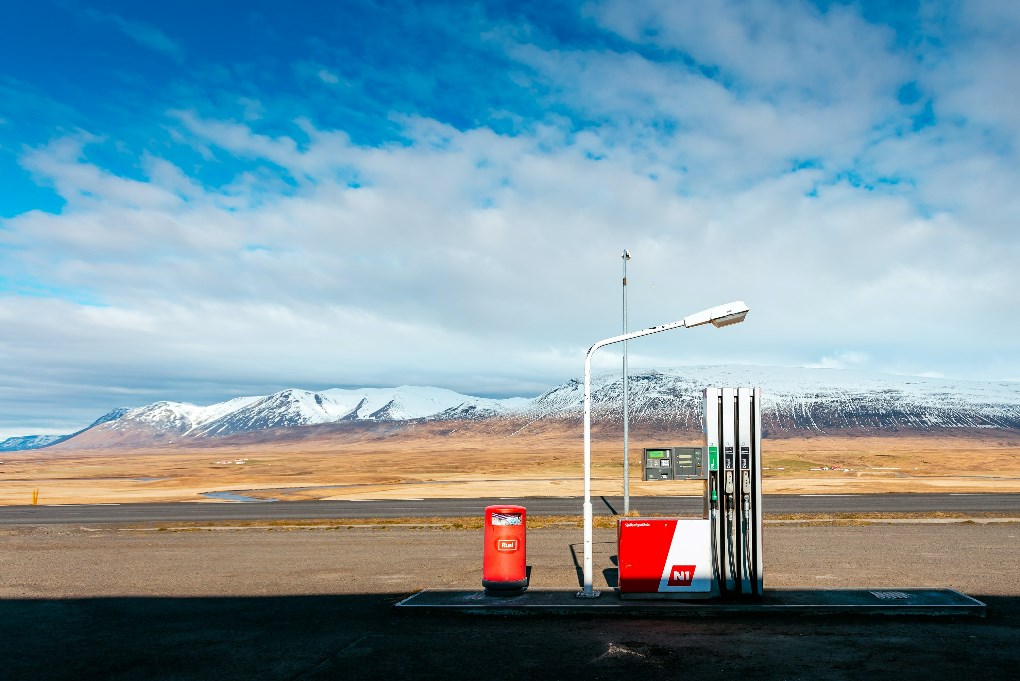
Wherever you buy your fuel, stations will accept payment via either a credit card with a 4-digit PIN number or a prepaid gas card purchased from a service centre.
When you rent with Lava Car Rental, you’ll also receive discount tags for N1 and OB stations. Scan the tags, which are found on your car’s keychain, at the pump to receive the discount. For more tips on finding cheap fuel, read our guide to gas stations and EV charging stations in Iceland.
Tolls & Entrance Fees
You may encounter some tolls and entrance fees as you’re driving in Iceland.
Entrance fees and parking fees are found primarily at popular attractions, where you’ll be charged a small amount to park in the attraction’s lot. For example, these fees exist at both Thingvellir National Park or Skaftafell National Park.
There is, however, only one toll in Iceland, and it’s the toll to pass through the Vaðlaheiðargöng tunnel, near Akureyri. This tunnel in the north of Iceland shortens your drive time around the region, though you can drive around the tunnel if you have more time and want to skip the toll. The toll must be paid online, at tunnel.is, either before or after you go through the tunnel, but within 24 hours of doing so.
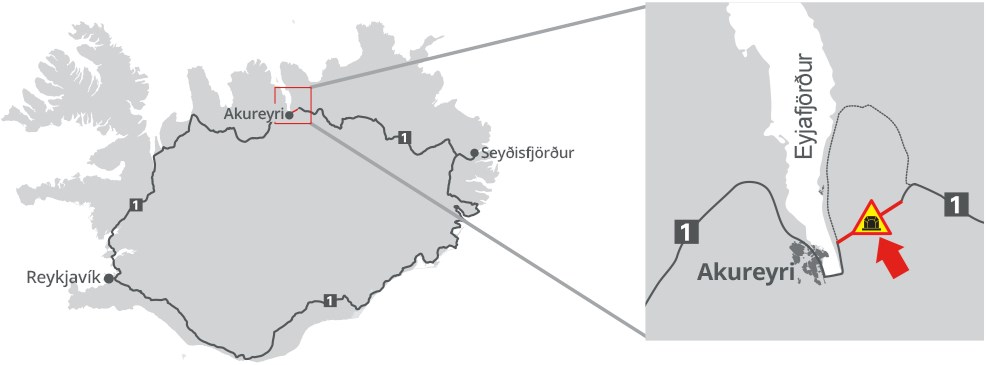
While these tolls and entrance fees are required if you want to see and do certain things in Iceland, there are other fees you can completely avoid, with the right precautions: fines related to skipping paying tolls or entrance fees, and fines related to parking outside of permitted parking spaces.
To avoid these fines, be sure to keep an eye out for any signage that indicates a toll or entrance fee is required, and then pay that toll or entrance fee in a timely manner. Additionally, be sure to park only in permitted spaces.
If you do receive a fine for one of these errors, the fine will be sent to your rental car company and the rental car company will charge you the fine plus a processing fee, at the end of your trip.
To learn more about all of the above, check out our in-depth guide to road tolls and parking fees in Iceland.
Parking in Iceland
But where can you park while you’re driving in Iceland, in order to avoid any parking fines or fees? Here are the quick details, but be sure to read our more comprehensive guide to parking in Iceland and Reykjavik.
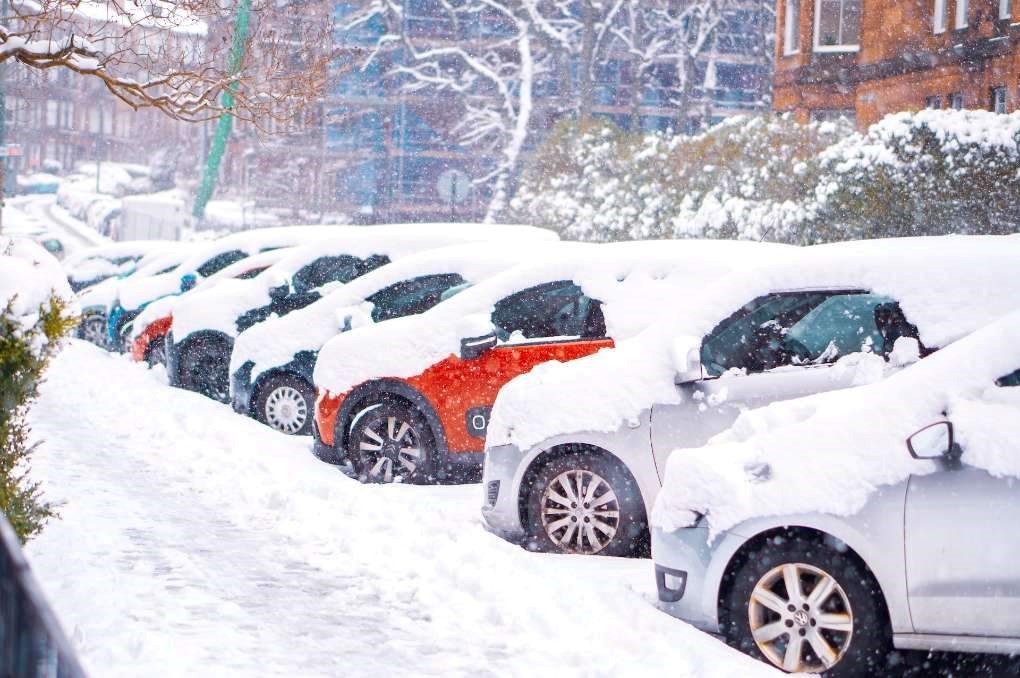
Can I park anywhere in Iceland?
When parking in Iceland, avoid roadsides outside the city, private property and off-road areas. Instead, stick to designated parking spots and lots. If you’re driving a campervan rental in Iceland, you may need to take further precautions with your parking. Read our guide to camping in Iceland to find the best spots to park a campervan in Iceland.
Is parking free in Iceland?
Parking is mostly free in Iceland. The exceptions are large cities like Reykjavik and Akureyri that may charge minimal parking fees, as well as major attractions like national parks and some of Iceland’s most famous waterfalls. To determine if parking is free, just look for the signs. If a fee is required, a sign will be posted.
Where to Drive in Iceland
Once you’re convinced that renting a car in Iceland is the way to go for your upcoming Iceland trip, you have to decide where exactly you want to drive in Iceland. Here are a few of our favourite options.
The Ring Road
The Ring Road, also referred to as Route 1, is the most popular roadway in Iceland and for a good reason — it circles the entire island and takes you to all of the top spots in the country. The 832-mile/1,339-kilometre road is mostly paved (though you will have to watch out for a few stretches of gravel roadways in the east) and a two-lane highway, with a 55mph/90km/h speed limit.
If you were just to drive around the Ring Road, with no stops, it would take you about 17 hours, but obviously, you want to make some stops. That’s the whole reason you’re in Iceland! Different travellers traverse the Ring Road at different speeds. It all depends on the pace you’re after and how many places you want to see on the Ring Road; some travellers spend a few weeks on the Ring Road, while others cram their entire journey into five or six days. We usually recommend taking between seven and 10 days on the Ring Road, which allows you to see the majority of the top spots without rushing.
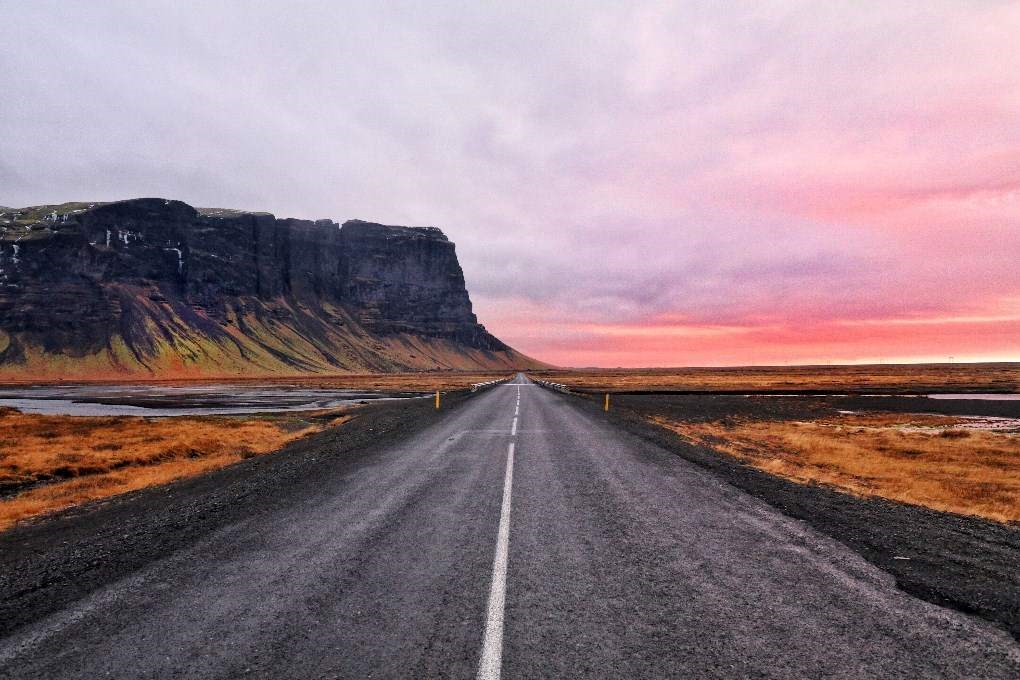
Some of the most popular stops along the Ring Road include, of course, Reykjavik, as you can’t visit Iceland without exploring our biggest city; Vik, a southern, remote village known for its proximity to the Myrdalsjokull glacier, beautiful beach, and cliffs full of puffins; Jokulsarlon, a glacier lagoon at the edge of Vatnajokull National Park, with a black sand beach and a huge seal colony that visits during the winter months; and Myvatn, a volcanic lake in the north surrounded by hot springs.
Of course, these favourited stops only scratch the surface of all that the Ring Road offers!
The Westfjords
One area of Iceland that a Ring Road trip does not include? The dramatic landscapes of the Westfjords. In the west of Iceland, the Westfjords is a peninsula that boasts some of the most awe-inspiring sights in the entire country — but they go relatively untouched and unseen compared to some of Iceland’s other, more accessible spots. So, if you’re seeking fewer crowds and lusher landscapes, it’s the Westfjords you’ll want to explore while driving in Iceland.
Some of the must-see spots in the Westfjords include Raudasandur, a pink sand beach; Dynjandi waterfall; and the Latrabjarg cliffs.
The Golden Circle
For those who want to see some of Iceland’s top, most popular spots, but who don’t necessarily have enough time to traverse the entire Ring Road, the Golden Circle is a nice pick for a driving trip through Iceland. Smaller, it’s only 300 kilometres/186 miles, so a good deal shorter than the Ring Road route.
The easy-to-follow, well-traversed road takes you to popular spots such as Gullfoss Waterfall, The Great Geysir and Thingvellir National Park. It also goes through Reykjavik, which is convenient for those staying in the city.
The Highlands
Like the Westfjords, Iceland’s Highlands are not accessible via the Ring Road, making them a little less popular with most travellers. However, for the intrepid adventurer, the Highlands is a playground filled with fun. The stunning landscapes of the Highlands are considered volcanic deserts; rough and mostly uninhabited, they offer views unlike any you’ll find elsewhere in the world.
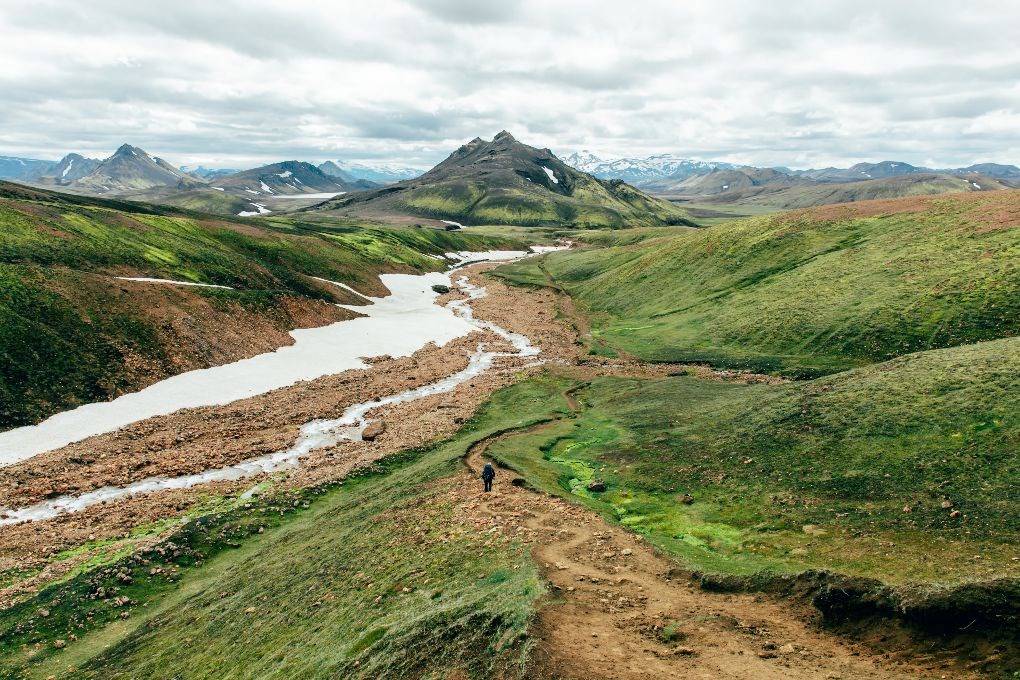
But, with such rugged terrain comes to a few challenges. Visitors wanting to drive in Iceland in the winter will find that the Highlands roads are only open in the summer, and only accessible to 4x4 vehicles, as some of the roads do require river crossings. Still, for those drivers in Iceland who aren’t scared of a little challenge, the Highlands are well worth a summertime trip.
Ready to Begin Driving in Iceland?
Driving in Iceland can be a rewarding experience and make for a memorable trip. By taking all of the above information into account and following the tips and guidelines, your trip will be safe, comfortable and as enjoyable as possible.
Wherever and whenever you plan on driving in Iceland, make sure you work with a rental car company that will likewise strive to make your trip as safe, comfortable and enjoyable as possible. Lava Car Rental is here to help, with a full lineup of modern rental cars to fit every traveller’s needs.
Still planning your Iceland road trip and want more info? Check out our information hub filled with all the resources you might need for planning an Iceland road trip, from a guide to the best travel apps to use while in Iceland, to a guide to cooking in a campervan rental in Iceland.




